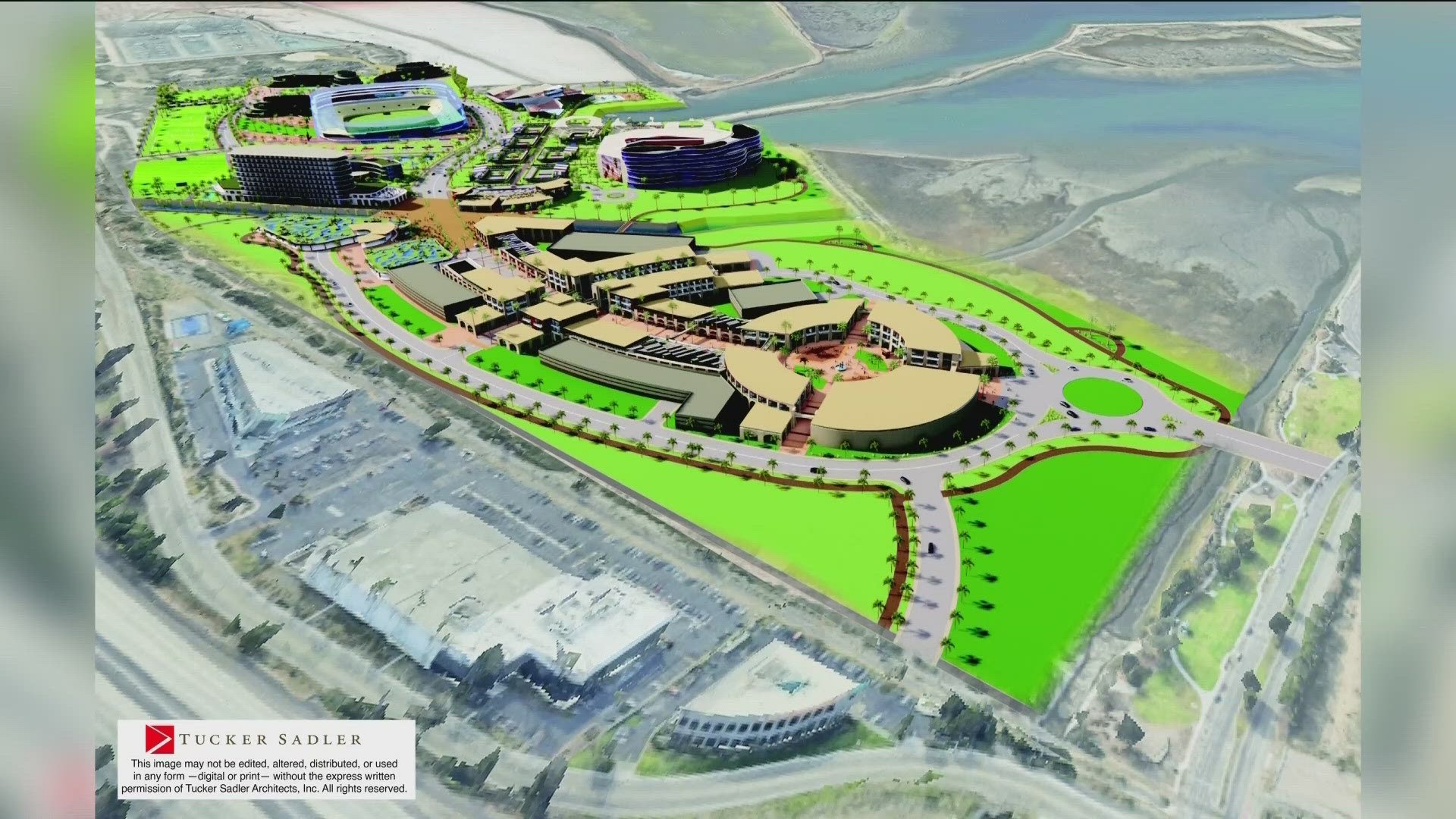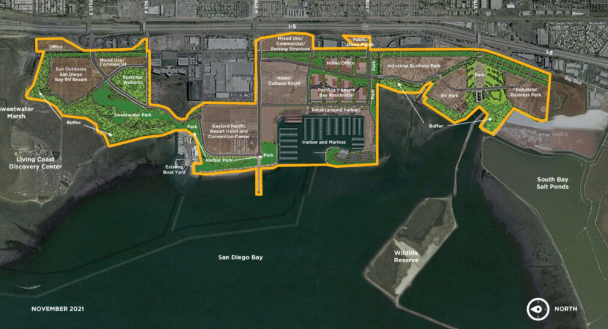A bold new vision is taking shape on the Chula Vista waterfront. The Port of San Diego has unanimously approved a six-month exclusive negotiating agreement with a development team proposing to build the Pangaea Sports and Entertainment District—a large-scale, mixed-use project on 124 acres of waterfront property known as the Otay District.
Led by The McGarey Group in partnership with the Divaris Group, Tucker Sadler Architects, and Provident Resources Group, the proposal includes a wide range of amenities: a world-class tennis center affiliated with a high-profile professional athlete, an IMAX theater, a PopStroke mini-golf venue co-owned by Tiger Woods, a water polo academy, three hotels with up to 700 rooms in Phase 1, 300,000 square feet of retail, and a possible 50,000-seat stadium for large sporting events. Additional features include office space focused on aquaculture and bluetech, open public trails, and preserved green space.
This project is the third phase of the decades-long Chula Vista Bayfront Master Plan. Previous phases have brought the Gaylord Pacific Resort and Convention Center, Sweetwater Park, and the Sun Outdoors RV Park. The goal has always been to create a destination that boosts economic activity, supports tourism, and better connects the South Bay to the region’s larger development narrative.
Supporters of the Pangaea project, including Chula Vista Mayor John McCann and members of the Port Commission, believe it could provide significant economic benefits by generating new revenue streams, attracting visitors from across the region and internationally, and creating a wide array of local jobs. Developers also emphasized their commitment to community benefit agreements and union partnerships, signaling a desire to build with both economic and social responsibility in mind.

However, not all feedback has been positive. Several environmental groups voiced concerns during the public comment period about the potential impact the large development could have on wetlands, wildlife, and water quality. As with any major waterfront project, striking a balance between development and environmental stewardship will be key as the plan advances.
The six-month agreement does not mean the project is approved—it simply allows the development team time to secure a formal partnership with the professional athlete who would serve as the face of the tennis facility and finalize early planning efforts. The Port emphasized that further environmental review, community engagement, and permitting processes will be required before any construction could begin.
If realized, Pangaea would be unlike anything currently on the South Bay waterfront—blending sports, hospitality, entertainment, and innovation in a single district. With tennis and other racket sports growing in popularity, especially in Southern California, the project could meet an existing demand while transforming a previously underutilized site into a new regional hub.
The coming months will determine whether this ambitious vision becomes a reality. As negotiations continue, community voices and environmental assessments will play an important role in shaping the future of the Chula Vista Bayfront.


